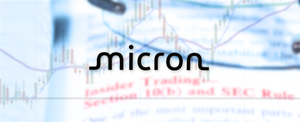The non-ferrous metal market in June is experiencing a “double sky of ice and fire”, and the divergence between copper and aluminum reveals which signals
According to data from the National Bureau of Statistics, in early June 2025, prices of non-ferrous metals fluctuated, with electrolytic copper prices rising 0.4% month on month to US$10935/ton and aluminum ingot prices falling 0.6% month on month to US$2810/ton. The difference in the rise and fall of electrolytic copper and aluminum ingots reflects the supply and demand patterns and market logic of different varieties. The following analysis is conducted from multiple dimensions:
1. The core driving factors of price differentiation
Reasons for the 0.4% increase in electrolytic copper prices
Tightening on the supply side: Frequent disruptions in global copper mine supply (such as strikes in Chile and Peru), coupled with centralized maintenance of domestic smelters, have led to a month on month decline in refined copper production.
Demand side support: The consumption of copper in the new energy sector (electric vehicles, photovoltaics, wind power) continues to grow, accounting for over 15% of global copper demand; At the same time, the peak season for air conditioning production in summer drives the demand for copper pipes.
Cost transmission: International copper prices (LME copper) have risen due to geopolitical risks, and the processing fees for imported copper concentrates (TC/RC) have continued to decline, pushing up domestic refined copper costs.
Reasons for the 0.6% decline in aluminum ingot prices.
Overcapacity pressure: The operating capacity of electrolytic aluminum in China has reached a high level of 43 million tons per year, and new production capacity continues to be released in Yunnan, Inner Mongolia and other places, highlighting supply pressure.
Weak demand side: The completed area of real estate decreased by 12% year-on-year, dragging down the demand for building profiles; The shortage of chips in the automotive industry has led to a decrease in orders for aluminum components.
Cost collapse: The price of alumina has fallen (from US$525/ton to US$485/ton), coupled with the decline in the price of pre baked anodes, the complete cost of electrolytic aluminum has dropped to below US$2635/ton.

2. Macroeconomic and policy impacts
Global economic recovery differentiation:
The US manufacturing PMI has been below 50 for three consecutive months, while the European industrial production index has declined. However, the Chinese manufacturing PMI has slightly rebounded to 50.8, indicating a combination of weak external demand and domestic demand recovery.
The Federal Reserve’s June interest rate meeting kept interest rates unchanged, but the dot plot shows only one rate cut in 2025, with the high volatility of the US dollar index suppressing non-ferrous metals.
Domestic policy adjustments:
Copper industry: The National Reserve Bureau has launched the second batch of copper storage plans (about 50000 tons), which has a bottoming effect on prices.
Aluminum industry: The National Development and Reform Commission has requested a tightening of carbon emission quotas for the electrolytic aluminum industry, but the short-term impact on production is limited, with more impact on long-term expectations.
3. Transmission effect of industrial chain
Electrolytic copper industry chain:
Upstream: The tight supply of copper concentrate has led to TC/RC falling to US$55/ton, hitting a new low since 2020, compressing the profits of smelters.
Downstream: Copper rod processing fees have risen to US$112/ton, and cable enterprise orders have increased by 8% month on month, indicating smooth transmission of power investment.
Aluminum industry chain:
Upstream: Excess production capacity of alumina has put pressure on prices, but the risk of blocked exports of Guinea bauxite has pushed up raw material costs.
Downstream: The operating rate of aluminum profile enterprises has dropped to 58%, and orders for automotive aluminum sheet and strip have decreased by 15% year-on-year, but demand for battery foil has increased by 30% year-on-year.
4. Outlook for Future Price Trends
Electrolytic copper:
Short term prices may remain volatile at a high level (US$10835 to US$11390/ton) supported by expectations of storage and demand for new energy.
Risk points: synchronized tightening of global central banks and easing of copper mine strikes.
Aluminum ingot:
Under the pressure of oversupply, the price may test a support level of US$2710/ton, but the space for cost collapse is limited.
Potential variables: loosening of real estate policies, stability of hydropower supply in Yunnan.
5. Market insights
Structural opportunity: The price differentiation of copper and aluminum highlights the difference in prosperity between new energy metals and traditional industrial metals. It is recommended to pay attention to copper related targets (such as Jiangxi Copper Industry and Zijin Mining).
Arbitrage strategy: The copper aluminum ratio (currently 3.9) is close to the 5-year average (3.8), and attention can be paid to cross variety arbitrage opportunities.
Media Contact
Company Name: Shanghai Miandi Metal Group Co., Ltd
Email: Send Email
Country: China
Website: https://www.aviationaluminum.com/






